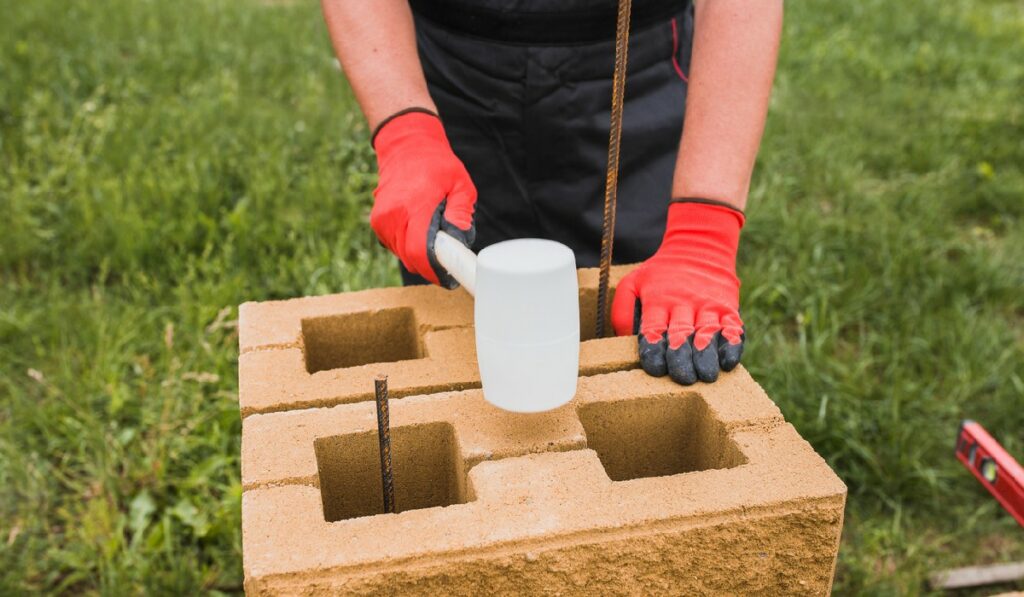10 Surprising Ways To Use a Rubber Mallet

- 1. Use as a Weight To Keep the Door Open
- 2. Use as a Hammer for Driving Nails
- 3. Non-marking Alternative to a Hammer
- 4. Support for a Nail Set
- 5. Removing Stuck Objects
- 6. Use for Tapping Joints
- 7. Installing Carpet or Tile
- 8. Woodworking and Carpentry
- 9. Straightening Bent Metal Parts
- 10. Tensioning Woodworking or Mechanical Components
- Conclusion
A rubber mallet is one of those tools that you might not think about often, but it’s incredibly versatile and can be used for so much more than just hammering. What is a rubber mallet used for? We’ll answer this question and more for you below. Your rubber mallet will become your go-to tool for any intricate task. If you want to learn more about how to use this versatile tool, you’re in the right place. We’ll go over 10 uses for this tool so you can prepare to use it for your next project.
1. Use as a Weight To Keep the Door Open
If you have a door that won’t stay open, try using a heavy rubber mallet or two in the doorway to keep the door open. This is especially useful if you’re carrying something large and need your hands free to do so.
2. Use as a Hammer for Driving Nails
The soft, non-marring head of a rubber mallet is great for driving nails into walls without leaving any marks or damage. This fact makes a rubber mallet ideal for use on delicate surfaces such as drywall and plaster.
3. Non-marking Alternative to a Hammer
If you have delicate items that need to be attached, but you don’t want to leave marks, then a rubber mallet is an ideal choice. Its soft head won’t leave scratches or dents on the items, making it perfect for delicate projects.
4. Support for a Nail Set
A nail set will sometimes slip off its target when driven with a hammer, but if you place the nail set on the rubber mallet, it provides enough grip to ensure it will stay in position while driving with the hammer.
5. Removing Stuck Objects
The soft head of the rubber mallet is ideal for removing objects that have become stuck together due to rust or corrosion because it won’t damage them in the process. It can also be used when removing rusted screws or bolts from metal surfaces without damaging the surface itself.
6. Use for Tapping Joints
When tapping two pieces of wood together, a rubber mallet is better than a metal hammer because it has softer material that won’t leave any marks on the wood surfaces.
7. Installing Carpet or Tile
When laying carpet or tile, it’s important to use tools that won’t mark up the surface being worked on, especially if it’s delicate material such as ceramic tile. A rubber mallet can gently tap pieces of carpet or tile into place without leaving any chips or dents on their surface.
8. Woodworking and Carpentry
A rubber mallet is great for joining two pieces of wood together without damaging their surfaces and leaving ugly dents or scratches on them. It can also be used to drive nails into the wood without causing unwanted damage to the surface of either piece of wood.
9. Straightening Bent Metal Parts
If you need to straighten out a bent metal part, such as a piece of rebar or structural steel, gently tap it back into shape using a rubber mallet instead of an ordinary metal hammer. This technique will prevent the metal from being further damaged by excess force from an ordinary hammer’s impact.
10. Tensioning Woodworking or Mechanical Components
A rubber mallet is also great for tensioning components when reassembling furniture or machinery. Its softer head doesn’t create too much force when tapping pieces together and helps keep the components in position without becoming misaligned when reassembling them.
Conclusion
Using these 10 surprising uses for your rubber mallet will help make home improvement and other projects faster and easier than ever. Try using this tool the next time you’re installing tile or completing a carpentry project. With this tool in hand, there’s no project too big to take on.
